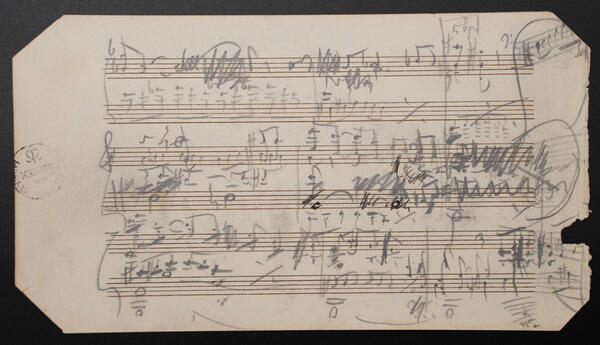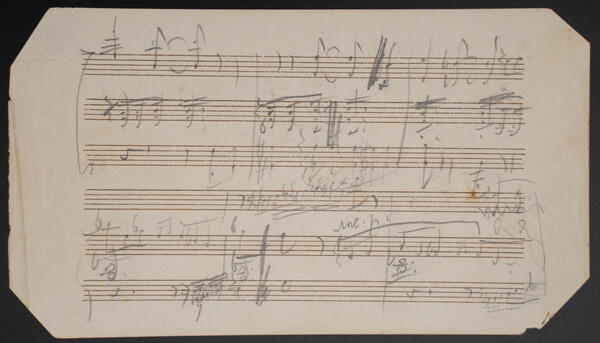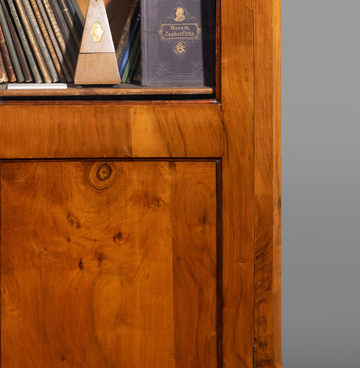Pyotr Ilyich Tchaikovsky’s score autographs presented in the museum illustrate the various stages of his work on a musical composition.
The sketch of a theme of his program symphony “Manfred” in B minor based on the plot of the poem by George Byron reflects the initial stage of this process. In the spring of 1885, when Tchaikovsky was in Switzerland, enjoying the wild nature of the Alps, where the plot of the dramatic poem unfolds, the first drafts for “Manfred” were created. In the autumn, the symphony was finished. A year later, on March 11, 1886, it was successfully performed in Moscow under the direction of Max Erdmannsdörfer.
Tchaikovsky once described his creative process in detail — from the first flashes of inspiration to the final touches. His motivation for writing music, according to him, was either an internal need to compose, or an order. When the idea of the composition matured and the first thoughts on the music appeared, which happened, as a rule, during his walks, systematic work on the composition as a whole began. He worked at a desk or piano, and sometimes in the most inappropriate places.
The next stages included instrumentation (creation of scores of orchestral compositions), rewriting and piano arrangements. Tchaikovsky noted, “It is a lot of fun to instrumentalize a composition that is already quite mature and even its most minute details are finished in my head. The same cannot be said about completely rewriting compositions for piano, for one voice, short pieces in general. It is boring sometimes.”
A separate phase was the preparation of scores for publication. This type of work, in addition to mental and physical stress, caused Pyotr Tchaikovsky endless regrets, as he worried about wasting his time. He often delegated proofreading to his friends and acquaintances. But in the end, he was rarely satisfied with their results and, in many cases, had to do a recheck.
Tchaikovsky devoted a lot of time to rehearsals, both as a composer and as a conductor. Preparations for the productions of operas and ballets became especially laborious, where a number of separate vocal, dance, orchestral and joint rehearsals were necessary.





